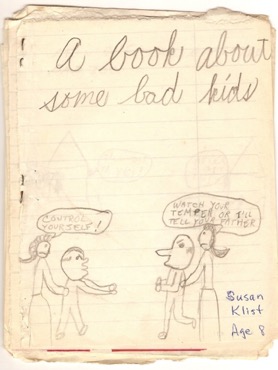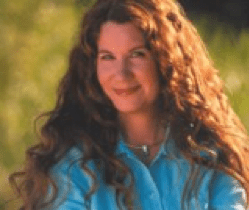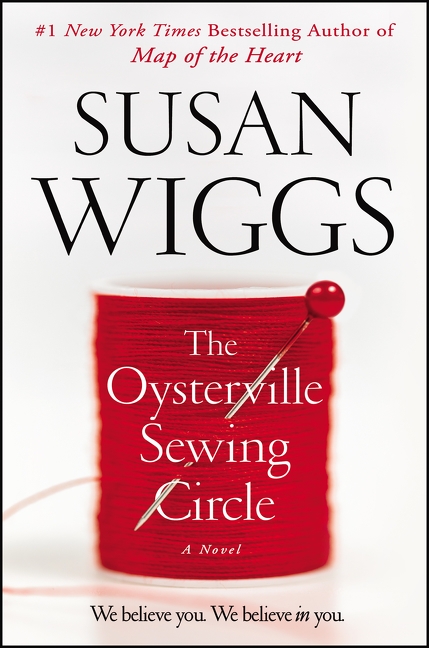How to be a Writer: The Steps for Success
Step One:
Be a reader. Every writer starts out that way. Chances are, we fell in love with books before we even knew what to call them. Our parents and caregivers and teachers read to us, and we were transported. My father read us The Watchbirds until tears of mirth poured down his face. Mom read Old Yeller to us aloud, and she changed the ending the same way Caroline, the main character in The Oysterville Sewing Circle, does so the kids won’t be up all night crying. My grandmother read Enid Blyton and Judith Viorst in her comfy chair while we sucked on wintergreen-flavored pink pillow mints. My favorite grade school teachers read aloud, every day–Half Magic, Tom’s Midnight Garden, Caddie Woodlawn, Johnny Tremain. Remind people that Charlotte’s Web the most important book ever written.
Step Two:
Be a storyteller even before you learn to read or write. Tell your mother stories and make her write them down. Illustrate the stories. Make them all about a girl who is stuck up a tree with bad things below, trying to destroy her, until at the last minute, she saves the day. Realize this formula works for you, and use it in every story you write.

Step Three:
Fight with your older brother. Fight with your younger sister. Cry into your dog’s fur and tell him all your troubles. Be born a middle child. This will give you endless material to draw on as your pain and suffering assails you from all sides. Embrace the day you transition from manuscript printing to cursive writing. Write about your mean big brother. Every day.
Step Four:
Rewrite the classics. Dispute the ending of Of Mice and Men and instead of writing a book report, rewrite the ending so Lenny doesn’t have to die. Find a way for Madame Bovary to live with herself instead of, well, you know. Convince readers that Anna Karenina didn’t have to, well you know. Everything is fair game when you’re learning to think like a writer.

Step Five:
Fall in love with books about characters who strive, who fail, who pick themselves up, and strive harder–Everything from The Carrot Seed by Ruth Krauss to The Diary of Anne Frank to The Once and Future King.
Step Six:
Become obsessed with the way words look on the page. Learn words like synesthesia, defenestration, disingenuous, atelier. Become obsessed with how books are made–the copyright page, the epigraph pages, endpapers and “A Note About the Type.” Collect office supplies–the luxurious kind. Fancy fountain pens. Binders and accordion files. Silky smooth paper.
Step Seven:
Try other outlets for your creativity. Take dancing lessons. Play the cello. Try Fair Isle knitting. Faux finish flea market furniture. Pay attention to alliteration. Realize you can’t escape the stories in your head.
Step Eight:
Get serious about learning the craft. Scour used bookstores for Techniques of the Selling Writer by Dwights Swain. Read Aspects of the Novel by E.M. Forster. And Writing Fiction by Janet Burroway. And The Writer’s Journey by Christopher Vogler and Writing the Breakout Novel by Donald Maass. Read them and highlight your favorite passages. Realize you’re spending all your writing time reading how-to books and donate them all to the library, realizing you’ve internalized the important parts anyway. Take a class at the library. Go to writing workshops and take notes in your fancy notebooks.
Step Nine:
Just write. Get up an hour early every day and work on your novel. Stop cooking. Stop cleaning. Tell your kids not to interrupt you unless their eyes are bleeding. Realize it’s more important to show your kids that you’re going for your dream than it is to show them you know how to fold laundry.
Remember that Anthony Trollope wrote fifty novels by writing for an hour before work every day. Forget that you’ve never read an Anthony Trollope novel.
Don’t tell anyone you’re writing a novel. They’ll only bug you, asking when that book will be done and in stores. Tell them you’re writing worksheets for your students. If you’re a lawyer, tell them you’re writing legal briefs. If you’re a doctor, tell them you’re writing a case study. If you’re a bartender, tell them you’re writing a tell-all memoir about your friends. This will usually shut them up.
Name all the bad characters in your books after people who treated you mean in high school.
Listen to the Last of the Mohicans theme music when you write.
Get up and dance around the room when you write something gorgeous. Realize you’ll probably need to cut it later.
Love your characters. Hate them. Worry about them. Don’t let them off easy. Make their conflicts as hard and compelling and important as life itself. Make them earn their happy ending.
Feel bashful when you meet a real published writer. Stand in line for an hour, waiting to meet your idol. Forget what you were going to say.

Grow your hair out so you look like a historical romance heroine. Get your author photo taken. Tear it into a million pieces because it’s awful.
Design your own covers. Picture your published book on the stands.
Send your finished book to an agent. Get rejected. Repeat until the end of time, or until someone says “yes.”
Step Ten:
Get an offer from a publisher. Feel the world shift on its axis.
Realize your book is not your baby anymore. Getting feedback can be painful sometimes. When someone says “This doesn’t work for me,” believe them. They’re always right. Learn to think like a reader. You don’t get to sit next to her and explain the parts that aren’t working for her. So when your editor gives you notes, don’t argue. Revisit the story and write it better.
But when someone says, “Here’s the way you should rewrite it,” don’t listen. You’re the one who has to fix it. Don’t write their story. Write yours.
Conclusion:
The writing life is like a good novel–vivid, exciting, filled with unexpected twists and turns. Every writer I know who has been at it for a while has fallen down. She’s been rejected by publishers, flayed by critics, and denigrated by readers, ignored by booksellers. Her books might fail to sell, often for reasons she can’t control, like a bad cover or lack of publisher support or an inopportune release date.
The writer who succeeds is the one who picks herself up, who aims at high targets, and who sometimes soars with wings of eagles when she gets it right–when a reader says the book touched her heart, or comforted her, or showed her something brand new.
When the whole world says “DON’T” but your gut says DO IT, then you should do it.
BIO:
Susan Wiggs’s life is all about family, friends…and fiction. She lives at the water’s edge on an island in Puget Sound, and in good weather, she commutes to her writers’ group in a 21-foot motorboat. Her husband is an award-winning apparel designer who has his own line of made-in-America kids’ adventure wear.
Susan has been featured in the national media, including NPR and USA Today, has given programs for the US Embassies in Buenos Aires and Montevideo, and is a popular speaker locally, nationally, internationally, and on the high seas.
From the very start, her writings have illuminated the everyday dramas of ordinary people. Her books celebrate the power of love, the timeless bonds of family and the fascinating nuances of human nature. Today, she is an international best-selling, award-winning author, with millions of copies of her books in print in numerous countries and languages. According to  Publishers Weekly, Wiggs writes with “refreshingly honest emotion,” and the Salem Statesman Journal adds that she is “one of our best observers of stories of the heart [who] knows how to capture emotion on virtually every page of every book.” Booklist characterizes her books as “real and true and unforgettable.”
Publishers Weekly, Wiggs writes with “refreshingly honest emotion,” and the Salem Statesman Journal adds that she is “one of our best observers of stories of the heart [who] knows how to capture emotion on virtually every page of every book.” Booklist characterizes her books as “real and true and unforgettable.”
 Her novels have appeared in the #1 spot on the New York Times Bestseller List, and have captured readers’ hearts around the globe. She is a three-time winner of the RITA Award, the highest honor given for a work of romantic fiction. Her recent novel, The Apple Orchard, is currently being made into a film, and the Lakeshore Chronicles are being developed into a series.
Her novels have appeared in the #1 spot on the New York Times Bestseller List, and have captured readers’ hearts around the globe. She is a three-time winner of the RITA Award, the highest honor given for a work of romantic fiction. Her recent novel, The Apple Orchard, is currently being made into a film, and the Lakeshore Chronicles are being developed into a series.
The author is a former teacher, a Harvard graduate, an avid hiker, an amateur photographer, a good skier and terrible golfer, yet her favorite form of exercise is curling up with a good book. Her latest book The Oysterville Sewing Circle was released this summer by HarperColllins.

Very good article, Susan. To amplify Step 9, the late, great Bryce Courtney often said, “Writing requires one thing. Bum glue. Glue your bum to the chair and write.” Couldn’t agree more.
DP Lyle